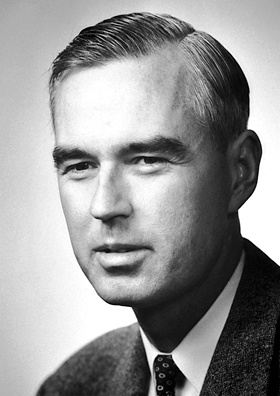Anomalous magnetic dipole moment of the electron Updated 2025-07-16
Richard Feynman Quantum Electrodynamics Lecture at University of Auckland (1979) mentions it several times.
This was one of the first two great successes of quantum electrodynamics, the other one being the Lamb shift.
In youtu.be/UKbp85zpdcY?t=52 from freeman Dyson Web of Stories interview (1998) Dyson mentions that the original key experiment was from Kusch and Foley from Columbia University, and that in 1948, Julian Schwinger reached the correct value from his calculations.
Apparently first published at The Magnetic Moment of the Electron by Kusch and Foley (1948).
Bibliography:
- www.youtube.com/watch?v=Ix-3LQhElvU Anomalous Magnetic Moment Of The Electron | One Loop Quantum Correction | Quantum Electrodynamics by Dietterich Labs (2019)
Lamb-Retherford experiment Updated 2025-07-16
Published as "Fine Structure of the Hydrogen Atom by a Microwave Method" by Willis Lamb and Robert Retherford (1947) on Physical Review. This one actually has open accesses as of 2021, miracle! journals.aps.org/pr/pdf/10.1103/PhysRev.72.241
Microwave technology was developed in World War II for radar, notably at the MIT Radiation Laboratory. Before that, people were using much higher frequencies such as the visible spectrum. But to detect small energy differences, you need to look into longer wavelengths.
This experiment was fundamental to the development of quantum electrodynamics. As mentioned at Genius: Richard Feynman and Modern Physics by James Gleick (1994) chapter "Shrinking the infinities", before the experiment, people already knew that trying to add electromagnetism to the Dirac equation led to infinities using previous methods, and something needed to change urgently. However for the first time now the theorists had one precise number to try and hack their formulas to reach, not just a philosophical debate about infinities, and this led to major breakthroughs. The same book also describes the experiment briefly as:
Willis Lamb had just shined a beam of microwaves onto a hot wisp of hydrogen blowing from an oven.
It is two pages and a half long.
They were at Columbia University in the Columbia Radiation Laboratory. Robert was Willis' graduate student.
Previous less experiments had already hinted at this effect, but they were too imprecise to be sure.
Polykarp Kusch Updated 2025-07-16
The Magnetic Moment of the Electron by Kusch and Foley (1948) Updated 2025-07-16
Published on Physical Review by Polykarp Kusch and Foley.
Willis Lamb Updated 2025-07-16
